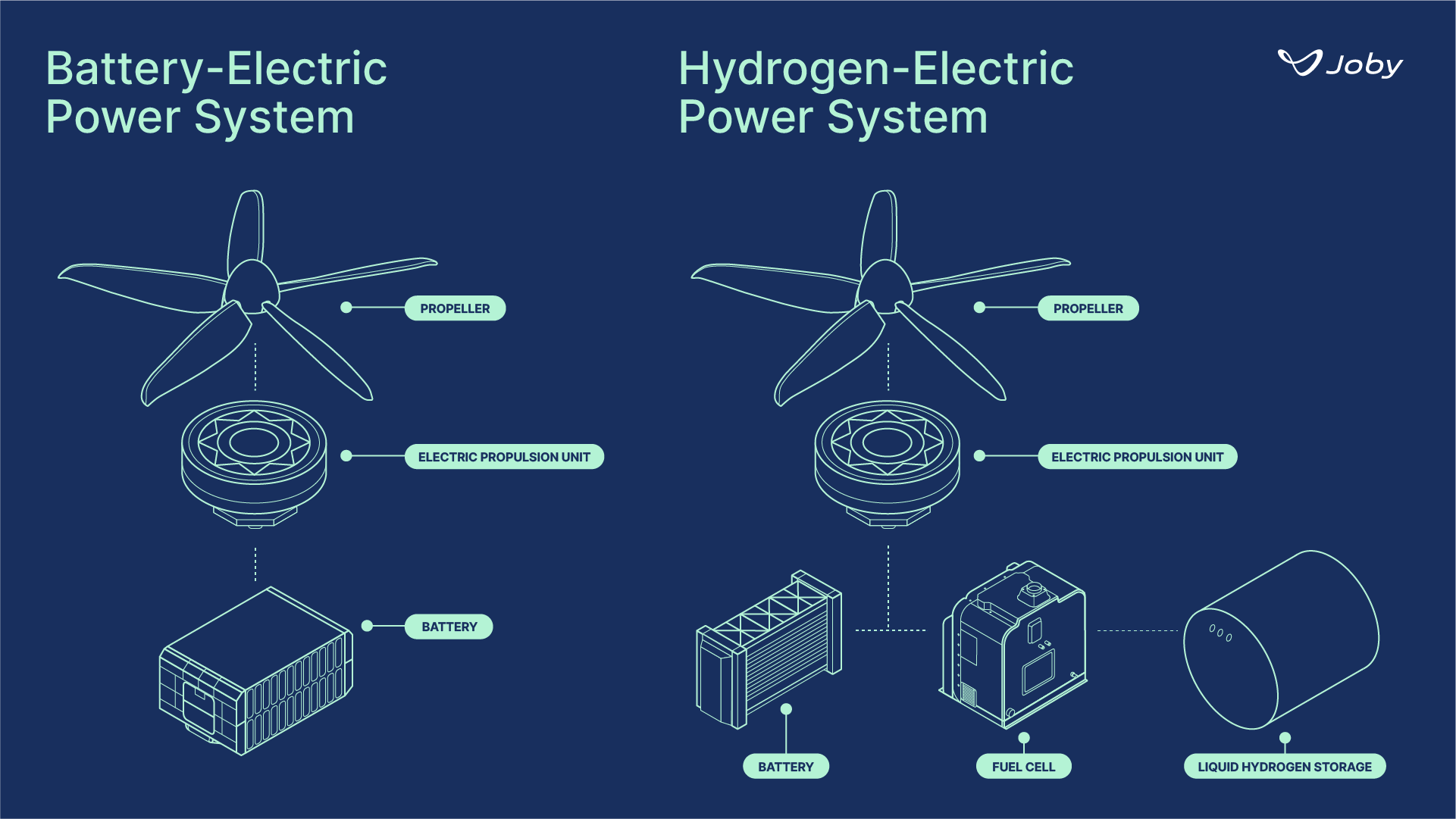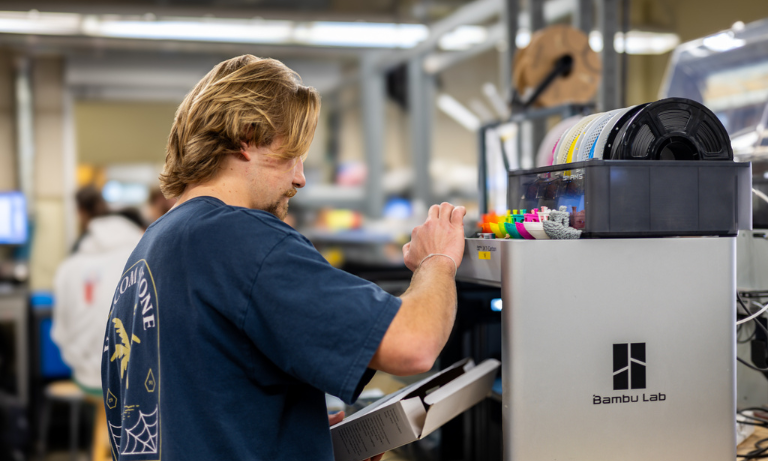Imagine this: You live near Santa Cruz and need to catch a flight from San Francisco International Airport. You could endure a two-hour drive through Bay Area traffic — or opt for something faster. Instead of sitting in a car, you call an Uber to the nearest heliport, where a sleek, quiet, electric air taxi lifts off and flies you to your terminal in just 10 minutes.
This scenario is quickly becoming a reality, thanks to Joby Aviation, which is transforming urban air travel with its all-electric aircraft. Powered by six electric motors, the aircraft takes off and lands vertically, marking a new era in urban mobility.
And one Cal Poly student has a front-row seat to this progress at Joby, where he’s helping write the next chapter of aviation.
“We’re at an incredibly exciting moment right now, with plans to start flying passengers as early as next year,” said Oscar Weir, a mechanical engineering major and member of Joby’s flight research team.
His path from Cal Poly to Joby and back mirrors the twists, challenges and breakthroughs that define the course of innovation.
“If I had to sum up my experience, it’s all about two things: learning by doing and daring to be different,” Weir said.

Weir, originally from England and still carrying a hint of an accent, moved with his family to Santa Cruz in 2011, just minutes away from Joby Aviation’s headquarters. As a child, he recalls visiting the company and spending hours modifying his electric skateboard, eventually boosting its speed to 55 mph.
His interest in Joby only deepened over the years. During a tour with his high school rocketry team, just before the company went public, Weir spotted an air taxi prototype and thought, “Holy moly, I want to work on this!”
For the inventive Weir, engineering felt like a natural choice, and Cal Poly turned out to be the perfect place. He enrolled as a mechanical engineering major in 2021, where he began honing the skills that shaped his already keen curiosity.
Even as he immersed himself in his studies, Joby was never far from his mind. After his sophomore year, determined to land a summer job there, he made multiple visits to the front office, resume in hand. His persistence paid off when he secured a two-hour interview with CEO JoeBen Bevirt, and by the end of it, he was hired on the spot to join the future technology program.
When Weir started at Joby in 2023, the company had just rolled out its first battery-electric production prototype. While that milestone marked significant progress, Weir joined a team focused on the next challenge: exploring liquid hydrogen to extend how far the aircraft can fly.
“Electric aviation is amazing, but the biggest limitation is range,” he said, explaining that while a 100-mile range works well for short trips — like ferrying people between city centers and airports — there’s also a need to fly farther.
In June, Joby flew what is believed to be the first vertical-takeoff-and-landing aircraft powered by liquid hydrogen, covering 523 miles and landing with 10% of its fuel left.
“The beautiful thing about startups is the rapid pace of progress,” he said, hinting that they’ve already well surpassed the range from earlier test flights this summer.
Weir’s primary responsibility has been figuring out how to store the fuel. Liquid hydrogen must be kept at extremely low temperatures and designing tanks that are both lightweight and capable of maintaining those temperatures is no easy task.
“One of our team’s biggest breakthroughs was reducing the weight to a level we’re really proud of — it’s now close to industry-leading.”

Weir’s college experience hasn’t followed a traditional path. He took time off — first to focus on his work at Joby, and later to spend time in Denmark to secure his Danish birthright through his mother, which required him to stay long enough to obtain a Danish passport.
Though he hopes to live in Europe one day, his current priority is finishing his degree. Returning to Cal Poly this quarter, he’ll bring with him a renewed appreciation for his schooling.
“Having a Cal Poly education has been absolutely critical to my work at Joby,” he said. “I remember sitting in a chemistry class thinking, ‘Why am I studying this?’ Ironically, I’ve been working with hydrogen chemistry ever since I joined Joby.”
While finishing his degree, Weir will continue working remotely for Joby, helping the company meet its ambitious goals for both battery-electric and hydrogen-powered aircraft.
The company plans to roll out one battery-electric aircraft a month by year’s end, all while navigating the complex FAA certification process. “We have to create our own avenue for certification,” Weir explained. “Our aircraft combines features of both planes and helicopters, so it doesn’t fit into existing categories. That’s why we’re working closely with the FAA to develop new regulations.”
Test pilots are already flying with sandbags in place of passengers, preparing for launches in Saudia Arabia and New York. Weir, who has flown the simulator for the electric aircraft, said he’ll be first in line when the flights are finally approved for passengers.
In the meantime, Weir will continue to build on what he’s learned, turning ideas into action and taking bold steps. “Both have been key to shaping who I am — at Cal Poly and Joby,” he said.
By Emily Slater



